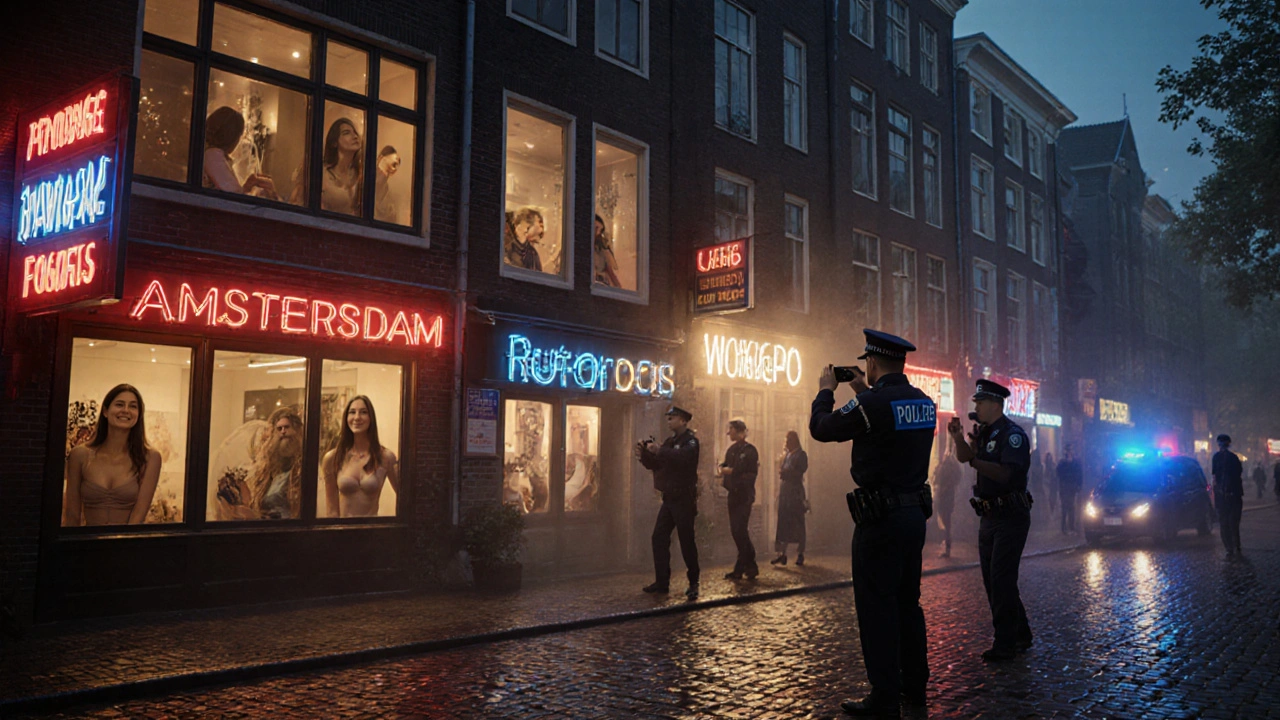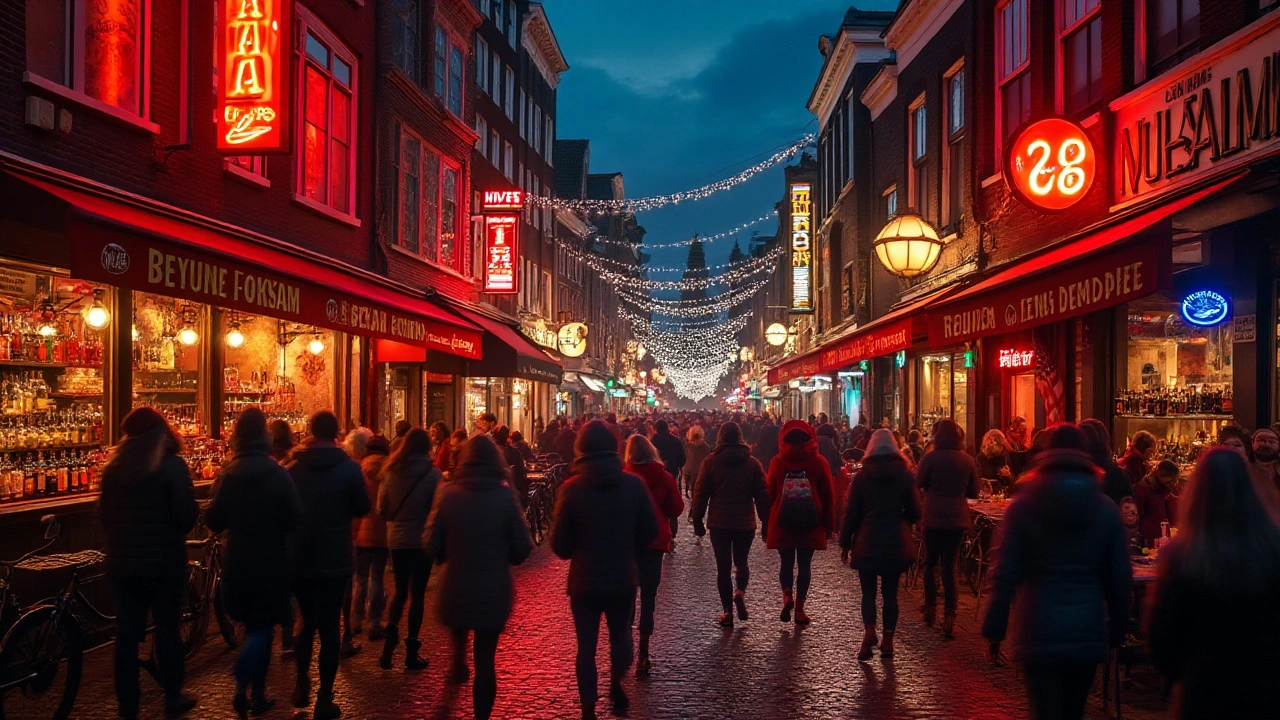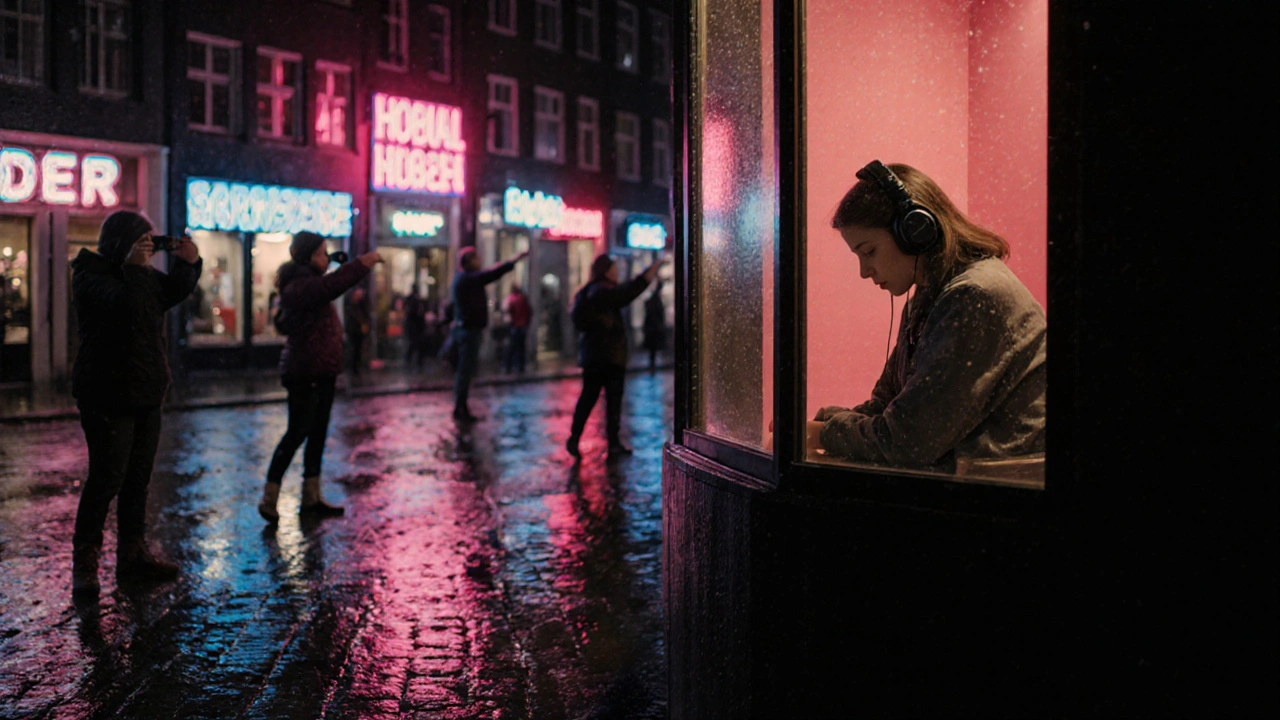
Every year, over 20 million tourists flood into Amsterdam. Many come for the canals, the museums, the bicycles. But a surprising number also come looking for something else-sex work in the Red Light District. The city’s reputation as a liberal, open place has made it a magnet for curiosity, and that curiosity has real, measurable effects on the women who work there.
More tourists, more pressure
The number of tourists visiting Amsterdam has more than doubled since 2000. In 2024, the city recorded 21.3 million visitors. That’s nearly three times the population of the entire Netherlands. And while most tourists never step foot in the Red Light District, those who do are often looking for immediate, visible access to sex workers. This creates a constant demand for women to be available, visible, and responsive-even when they’re tired, sick, or just not in the mood.
Window prostitution, where workers sit behind glass in small rooms, was once a quiet, regulated part of the city’s landscape. Now, it’s a 24/7 attraction. Tourists snap photos, point, laugh, and sometimes even knock on the glass. The women inside aren’t performers. They’re people trying to earn a living under intense scrutiny. The rise in tourism hasn’t brought better pay-it’s brought more noise, more intrusion, and more exhaustion.
Prices haven’t risen, but costs have
Back in the 1990s, a 30-minute session in the Red Light District cost around 30 euros. Today, it’s still about 40 to 60 euros. That hasn’t changed much. But everything else has. Rent for a window space has tripled in the last decade. Many workers now pay up to 1,200 euros a month just to rent their room. Utilities, security, cleaning, and mandatory health checks add another 200 to 400 euros. For many, that leaves little after taxes and fees.
Some women work 10 to 12 hours a day, six days a week, just to cover costs. Others rely on tips from tourists who don’t understand the system-thinking they’re giving a bonus when they’re actually paying a premium for a service that’s already priced in. The money doesn’t go up. The pressure does.
Foreign demand and exploitation
Not all workers in the Red Light District are Dutch. A significant portion are from Eastern Europe, Latin America, and Southeast Asia. Many arrived on tourist visas, lured by promises of modeling jobs or waitressing. Some end up in situations where their documents are taken, their movement restricted, and their earnings controlled by others.
In 2023, Dutch authorities reported 127 cases of human trafficking linked to the sex industry in Amsterdam. While that’s a small fraction of the total number of workers, it’s a number that’s grown steadily as tourism has surged. Tourists rarely see the dark side. They see a woman behind glass. They don’t see the trafficker who took her passport, or the landlord who demands payment in cash every Monday.
Some tourists justify their visits by saying, “It’s legal here.” But legality doesn’t equal ethics. The system was designed for autonomy, but tourism has turned it into a spectacle.
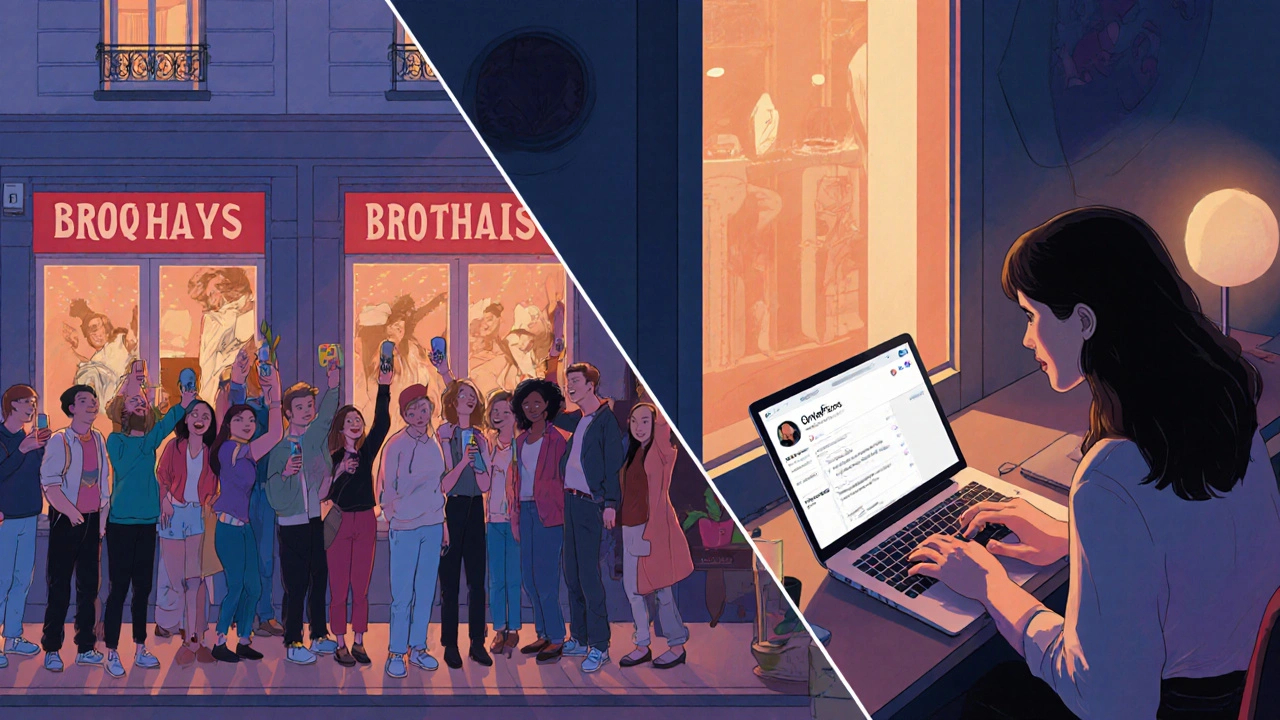
The rise of online escorts and the decline of windows
More and more sex workers are moving away from the windows. Why? Because the internet gives them control. Platforms like OnlyFans, private booking sites, and even Instagram DMs let women set their own hours, choose their clients, and work from safer locations.
One worker, Maria, who used to sit behind glass in De Wallen, now works from a rented apartment in Amstelveen. She charges 150 euros per hour, books appointments online, and screens clients through video calls before meeting. “I used to be a product on display,” she told a local journalist in 2024. “Now I’m a professional. And I get to decide who sees me.”
This shift is happening across the city. Window prostitution has declined by 35% since 2018, according to Amsterdam’s municipal data. Meanwhile, online bookings have increased by over 200% in the same period. The tourists who come looking for the classic Red Light District experience are often disappointed. The real industry has moved behind screens and passwords.
What tourists don’t realize
Most tourists think they’re supporting a harmless, regulated industry. They don’t realize how much of what they’re seeing is now a performance for them. Some brothel owners have started advertising “tourist packages”-30 minutes with a woman who speaks English, takes photos, and smiles on cue. These aren’t personal services. They’re commodified experiences.
And the women? They’re expected to play along. To smile. To pretend they’re enjoying it. To thank the tourist for “being kind.” Many say they’ve learned to detach mentally. Some wear headphones to block out the noise. Others have therapy sessions paid for by nonprofit groups.
Amsterdam’s government has tried to clean things up. They’ve shut down 200 window spaces since 2020. They’ve banned group tours from stopping in front of the brothels. They’ve even started fines for people taking photos without consent. But enforcement is inconsistent. And the root problem remains: tourists keep coming, expecting to buy a moment of intimacy from a stranger.
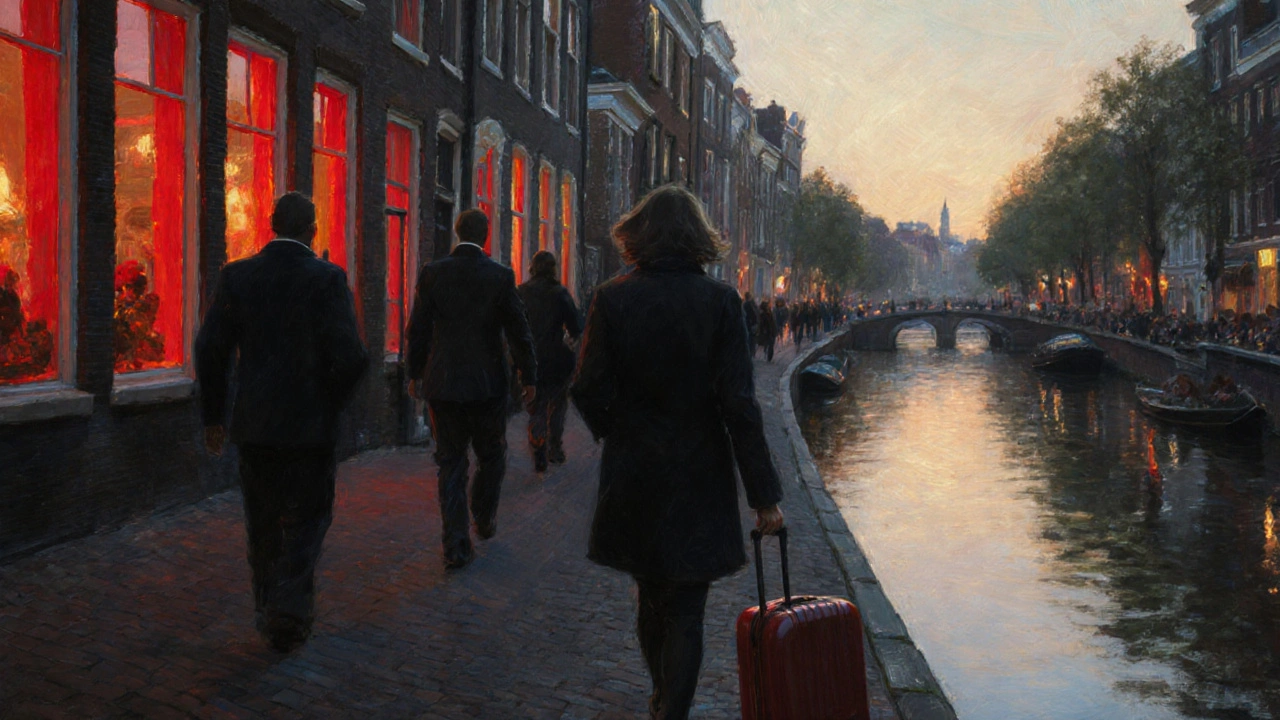
The human cost behind the postcards
Behind every window, every booking, every selfie taken by a tourist, there’s a person. A woman who may have come here because she had no other options. A woman who works through pain, loneliness, or fear. A woman who doesn’t want to be a tourist attraction.
She doesn’t want to be part of your Instagram story. She doesn’t want to be the punchline of your joke with friends back home. She just wants to pay her rent, keep her health, and maybe one day leave.
Amsterdam’s Red Light District isn’t a theme park. It’s a workplace. And like any workplace, it’s shaped by demand. Tourists don’t just visit the city-they reshape the lives of the people who live and work here.
What you can do differently
If you’re visiting Amsterdam and curious about the Red Light District, here’s a better way:
- Don’t take photos. Don’t knock on glass. Don’t stare.
- Don’t assume everyone behind the window is there by choice.
- If you want to engage, go to a licensed brothel and ask if they offer private appointments-no windows, no crowds.
- Support organizations like Red Light Help, which offer legal aid, housing, and exit programs for sex workers.
- Consider that the most respectful thing you can do is not participate at all.
Amsterdam doesn’t need more tourists buying moments. It needs more people who understand that human dignity isn’t for sale-even when it’s legal.
Are call girls in Amsterdam forced to work?
Some are, some aren’t. While prostitution is legal in the Netherlands, human trafficking still exists. Many women work independently and choose their clients. Others are controlled by third parties who take their earnings, restrict their freedom, or use threats. Authorities estimate that around 10-15% of workers in the Red Light District are victims of trafficking, though the real number may be higher due to underreporting.
Is it safe to visit the Red Light District as a tourist?
Yes, the area is generally safe for tourists as long as you respect the space. Avoid taking photos, don’t harass workers, and don’t try to negotiate prices on the street. Most workers are not interested in casual conversation. The real risk isn’t violence-it’s contributing to a system that exploits vulnerability. Be mindful of your behavior.
Why haven’t they closed the Red Light District?
Because it’s not just about tourism-it’s about labor rights. The Dutch government recognizes sex work as legitimate work under certain conditions. Closing the district would push workers into more dangerous, unregulated spaces. Instead, officials are trying to reduce tourism-driven exploitation by limiting window spaces, banning photo tours, and supporting exit programs for those who want to leave the industry.
How much do call girls in Amsterdam actually earn?
Earnings vary widely. Window workers typically make 40-80 euros per session but pay 1,000-1,500 euros a month in rent and fees. After expenses, many take home 1,000-2,000 euros a month. Online workers earn more-100-200 euros per hour-but they handle marketing, bookings, and safety themselves. A small number make over 5,000 euros a month, but they’re the exception, not the norm.
Do tourists pay more than locals?
Sometimes, but not always. Many workers charge the same rate regardless of nationality. However, some brothel owners set higher prices for tourists who don’t know the norms-expecting them to pay more for the “experience.” Others charge less to locals who come regularly. It’s not consistent, but price discrimination based on tourist status does happen.
What’s the difference between a call girl and a window prostitute in Amsterdam?
A window prostitute works in a visible room in the Red Light District, usually with no appointment needed. A call girl typically works independently, arranges meetings through online platforms or phone calls, and meets clients in private apartments or hotels. Call girls have more control over their schedule, safety, and pricing. Window workers are more visible, more exposed to tourists, and more affected by city regulations.
Can I hire a call girl in Amsterdam legally?
Yes, as long as the worker is over 18, not being exploited, and operating legally. Hiring someone through a private booking platform or agency that complies with Dutch law is legal. Paying for sex in public spaces, soliciting on the street, or hiring someone who is trafficked is illegal. Always verify the person’s identity and consent. If it feels too easy or too cheap, it probably isn’t legitimate.
Amsterdam’s Red Light District isn’t going away. But it doesn’t have to be a place where people are turned into attractions. The future of sex work here depends on how visitors choose to behave. Respect isn’t optional. It’s the only thing that keeps dignity alive in a place that too often forgets it.

